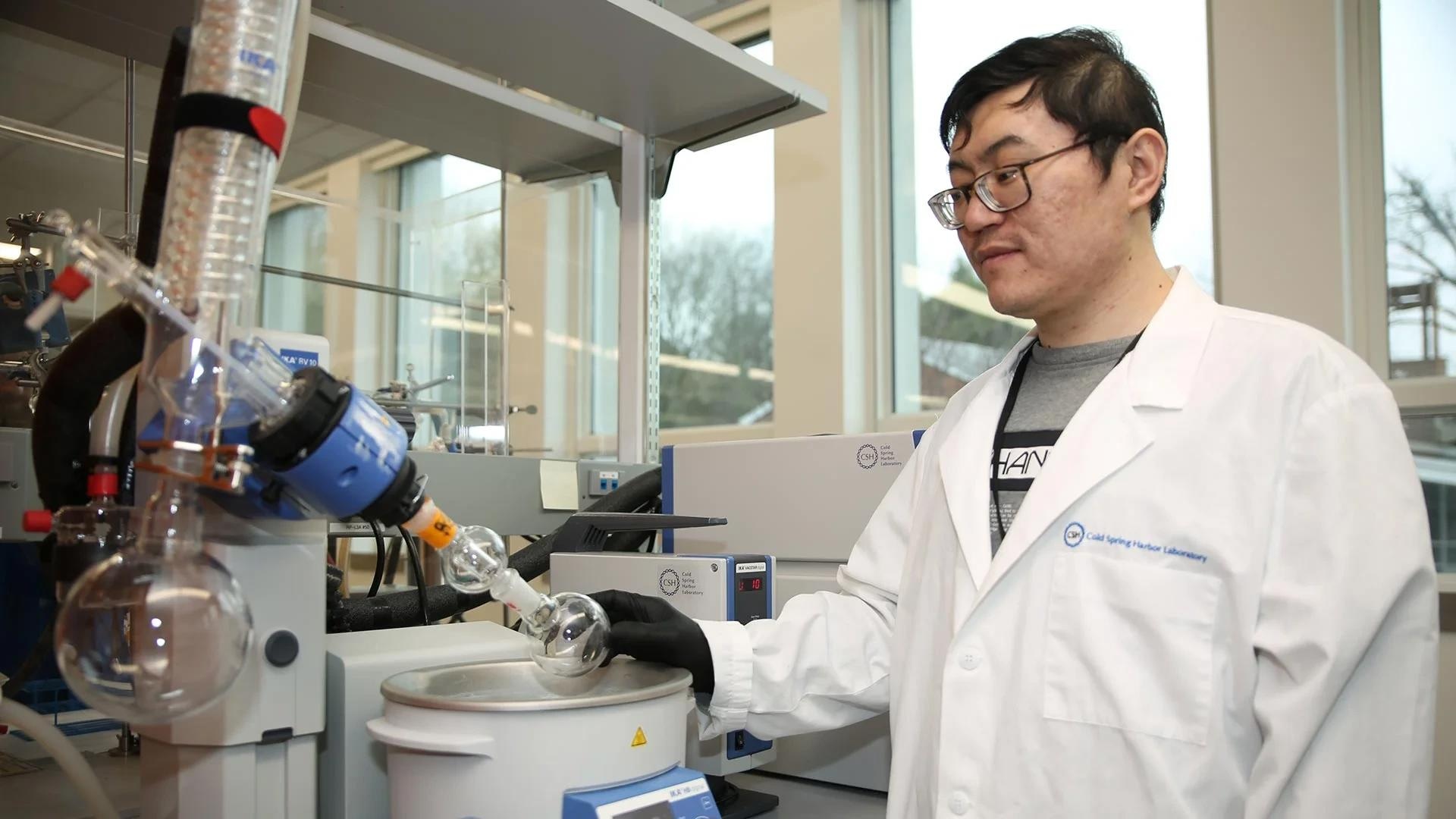Diversity, according to chemists like Cold Spring Harbor Laboratory (CSHL) Professor John Moses, is a doorway to discovery. Scientists are more likely to discover something valuable if they have access to more molecules to study.
 Shoujun Sun, seen here, is a postdoctoral fellow in Cold Spring Harbor Laboratory Professor John Moses’ lab. Sun led a new Moses lab study that marks a significant breakthrough for the field of click chemistry. Image Credit: Cold Spring Harbor Laboratory
Shoujun Sun, seen here, is a postdoctoral fellow in Cold Spring Harbor Laboratory Professor John Moses’ lab. Sun led a new Moses lab study that marks a significant breakthrough for the field of click chemistry. Image Credit: Cold Spring Harbor Laboratory
They can now easily build a wide range of complicated molecules, thanks to the newest breakthrough from Moses’ lab. Moses expects to identify successful new cancer therapies among those molecules.
Moses’ team developed the phosphorus fluoride exchange, or PFEx, a chemical process in partnership with two-time Nobel winner K. Barry Sharpless. PFEx reliably assembles chemical building blocks to create new molecules by snapping them together, a procedure known as click chemistry.
Chemists already have access to a robust collection of tools using Click Chemistry. The newest instrument in that toolbox, PFEx, borrows phosphorous’ biological role as a chemical connection.
In cells, phosphorous keeps together crucial energy-storing molecules and gives DNA its structure. It is a connection with several uses. It connects several chemical groups easily. Three-dimensional forms can be made by arranging these groups around the phosphorous hub.
Nature has recognized its importance—it is a privileged group. If we are trying to make drugs that interact with biology, we should not ignore that fact.”
John Moses, Professor, Cancer Center Member, Cold Spring Harbor Laboratory
Now, chemists can click together numerous different chemical components around a single phosphorous hub using PFEx. They can generate even more complicated molecules by adding more phosphorous connectors.
We are now decorating this three-dimensional linkage. And that is going to allow us to access some new chemical space. When you access new space, you are accessing new function.”
Joshua Homer, Research Investigator, Cold Spring Harbor Laboratory
PFEx reactions could allow drugs to bind to their targets within the body. Moses’ team has already begun investigating PFEx as a potential source of cancer treatments. One advantage of this method is that researchers can fine-tune the reactivity of the molecules involved in PFEx reactions.
This could guarantee that prospective drugs only interact with their intended targets, lowering the chance of negative effects.
The researchers anticipate that their novel type of click chemistry will aid in developing materials with valuable features. PFEx might be used to include flame retardants or antimicrobials into new surfaces, for example.
According to Moses, PFEx materials will have a significant advantage over the “forever chemicals” used in many modern items. Phosphorous bonds are not particularly stable. This implies that when a product is ready for recycling, it could be simply broken down.
Source:
Journal reference:
Sun,S., et al. (2023). Phosphorus fluoride exchange: Multidimensional catalytic click chemistry from phosphorus connective hubs. Chem. doi.org/10.1016/j.chempr.2023.05.013